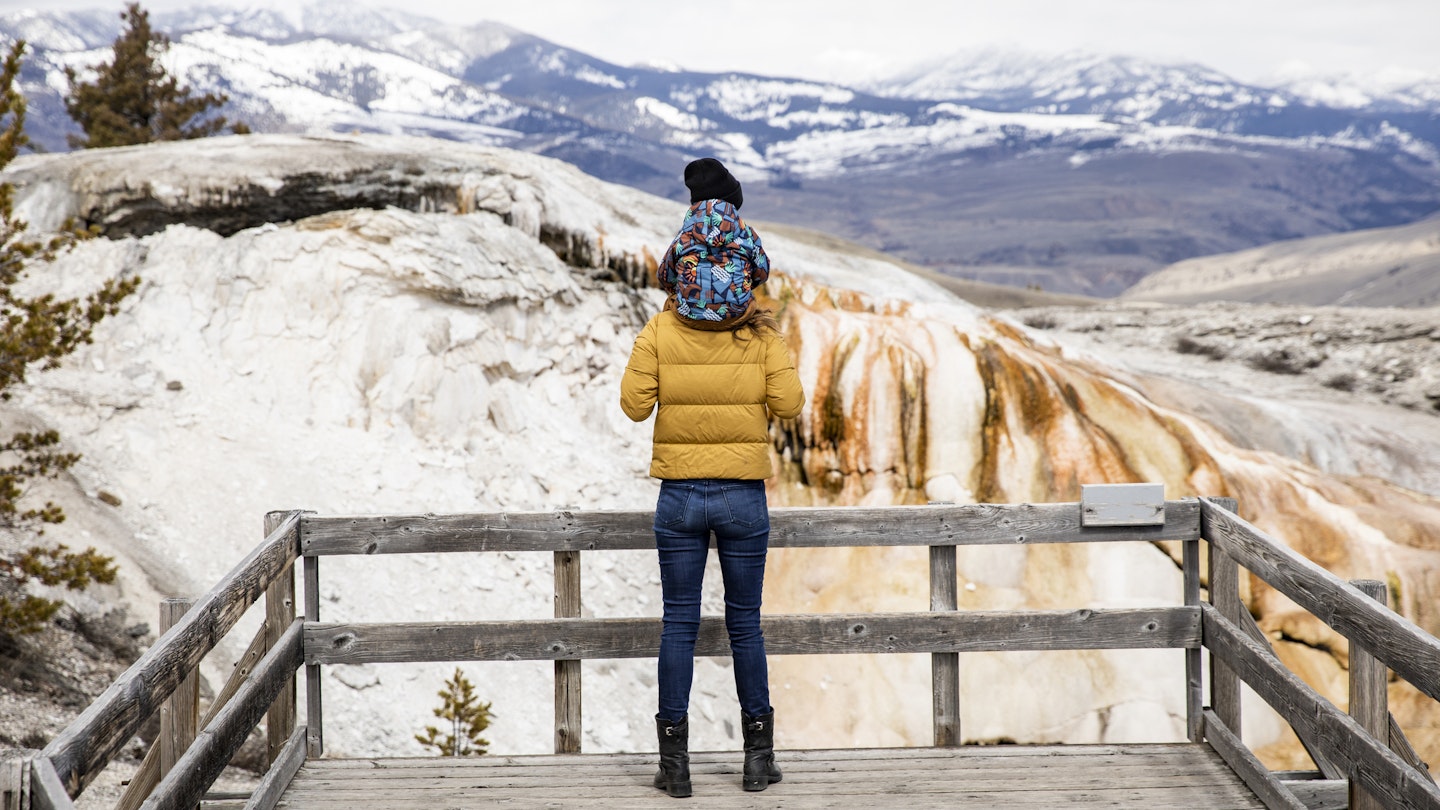Yellowstone is the world’s oldest national park, covering more than 3,400 square miles filled with incredible wildlife viewing, powerful geysers, and stunning scenery. Each season provides a unique experience, which is why considering the time of year is essential when planning your trip.
The park’s busiest season spans from late May through September. Most of the roads within the park are closed to vehicles from late fall to spring, gradually reopening in late April and May. However, inclement weather can result in road closures at any time. During the off-peak season, services are very limited, so it’s crucial to be aware of the weather conditions as you plan your visit. Prepare for sudden changes throughout the year, from snowstorms in summer to winter’s fierce blizzards and subzero temperatures.
It is worthwhile to learn about wildlife safety, as you may encounter animals ranging from bison to bears. Always maintain a safe distance (a minimum of 100 yards from bears and wolves, and 25 yards from other species), and familiarize yourself with pertinent safety tips, including information about geothermal features, environmental conditions, and safe driving practices.
Entrance to Yellowstone costs $35 for a private vehicle, granting access for seven days. A variety of other types of passes, including annual options, are available. Additionally, there are camping fees and specific hiking permit costs to consider. Here’s how to time your next trip to Yellowstone National Park effectively.
June to August: Best Time for Camping
Most campgrounds within Yellowstone open in May or June and close in early fall, making summer prime time for those wishing to camp under the stars. Therefore, it is advisable to reserve camping sites as early as possible. From pitching a tent to hiking, exploring the park’s geothermal areas (including the famous Old Faithful geyser), observing wildlife, and cooking meals together, this season offers unforgettable experiences. For those keen on backcountry adventure, consider detours off the beaten track.
Despite being the park’s busiest season, the crowds are drawn for a reason. Weather and construction permitting, all park roads are usually open, and Yellowstone is at its most accessible. Daytime temperatures typically range from 70-80°F, although certain areas can dip below freezing at night, so it’s crucial to pack accordingly to remain warm and comfortable. Summer thunderstorms are common, and snow is a possibility. In bear country, keeping a clean campsite and securely storing food is imperative.

September and October: Ideal for Fall Photography
Each season in Yellowstone offers unique photographic opportunities, with fall allowing captures of wildlife amidst vibrant foliage. Moreover, this period welcomes the elk rut, where males bugle and engage in battles for mating rights. This spectacle is often visible near Mammoth Hot Springs, but it’s essential to use telephoto lenses and maintain a minimum distance of 25 yards for safety.
Although September can be busy, the crowds significantly diminish in October, generally disappearing by November as most park roads close early in the month. Many park services also reduce availability in late September and early October, making early preparation crucial. Expect daytime highs of 30-60°F, with potential cold evenings and snow.
November to March: Best for Avoiding Crowds
Winter marks the quiet season for the park, with visitor numbers substantially lower than in summer. For instance, Yellowstone recorded over 1 million visits in July 2021, but only around 33,000 in November that same year.
The road linking the park’s North Entrance to the Northeast Entrance generally remains open for vehicles year-round, weather permitting. This route through Lamar Valley is particularly notable for its exceptional wildlife viewing—ideal for those with binoculars or spotting scopes.
Winter serves as an excellent time for wildlife observation, photography, and recreational activities like cross-country skiing and snowshoeing. Several outfitters provide snowmobile and snowcoach tours, with rental permits available through a summer lottery.
When visiting in winter, ensure you wear appropriate clothing, such as a windproof jacket with a hood. Moreover, don’t forget essentials like sunscreen and sunglasses, as the snow can reflect sunlight intensely. Exercise caution while driving, only using plowed routes to avoid unexpected delays.
April to June: Best for Wildlife Viewing
Spring heralds the season of birth in Yellowstone, with baby bison appearing around April or May in Lamar Valley, and elk calves often sighted in May and June near Mammoth Hot Springs. Additionally, moose and pronghorn calves can be found in May, while wolf pups may also make a rare appearance.
April signals the gradual opening of park access, with most roads typically unblocked by Memorial Day. However, always verify the current road conditions before heading out.





